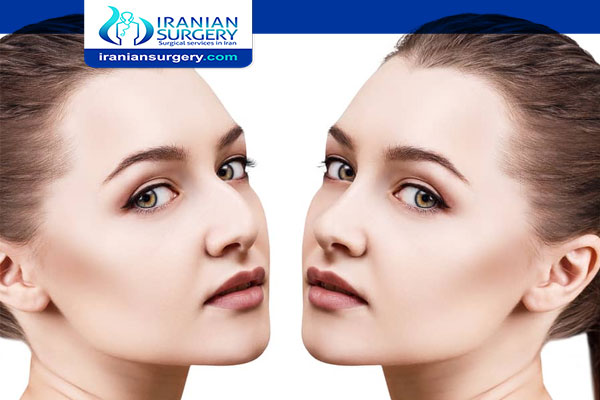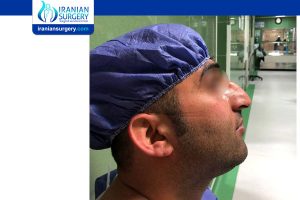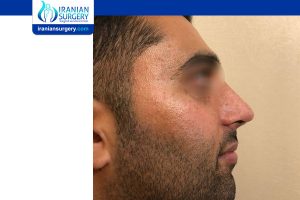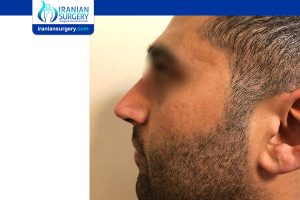Types of nose jobs

Author : Dr. Maryam Mosleh / Otolaryngologist, Head and Neck Surgeon.
Types of Rhinoplasty Surgery
What are the different types of rhinoplasty?
We have 2 types of rhinoplasty techniques:
- close
- open
As the names describe, open rhinoplasty has an incision under the bridge of nose which is usually very small and not detectable after a short period. But close rhinoplasty is incision less.
Although close rhinoplasty seems better technique to many patients, for most noses, we prefer open rhinoplasty cause in this technique surgeon can change the shape of the nose more accurate.
Read more about : Type of face lift
The question is which noses are better candidates for close technique and which is better for open one?
All noses can be candidates for open technique but for close one, the best candidates are who have major problem in their dorsum of nose such as big hump and minor problems in their tip of nose.
Read more about :
There are 2 types of nose that patient according to their races have:
The one that needs augmentation, means they have small nose and they want a bigger one. East Asian usually needs this kind of surgery.
- The one that needs reduction, means they have big nose and we should makes some cuts to make it smaller. Most Middle East patient needs this kind of surgery.
Read more about : Ethnic rhinoplasty
When we decides that which technique is good for patients, now we have to evaluate the nose.
The most important factor for rhinoplasty is the skin of nose. The patient with very thick or very thin skin are not a good candidates for surgery. Although there are lots of technique for these kinds of nose, at the end, the patients are often not happy with the result.
Other evaluations such as septum, airway, cartilages and nasal bone should be done before surgery to make sure of the best result.
Read more about : Rhinoplasty surgery , Before and after surgery Videos
Read more about : Nose job simulator
Read more about : Deviated septum surgery
Before surgery:
When a doctor decides to do the surgery, the patient should let the surgeon know his or her expectations. That’s why I always recommend the patients to look at the mirror carefully and with accuracy to find out what they don’t like about their noses.
In this way surgeon can decide whether the expectation are achievable during surgery or not. Most surgeons do not like the patients to bring the photo of their desired nose, but to me, I prefer to take a look at the photo to find out what they expect and what kind of nose they really want. In this way I know whether we can do it or not. Communication between surgeon and patient before surgery is very important and can change the outcome of surgery.
Professional photo from different angles of nose is very helpful for both patient and surgeon. Most patients don’t like to look at their photos but I think they should look at it carefully to find out all the asymmetries and problems of their noses before surgery. In this way they would be more realistic.
It is better to quit smoking 10 days prior to surgery. The patients should discuss the all medication and diseases that they have. Because this surgery is not urgent and many medication and diseases can affect the result of it. So, be honest with your doctor.
Last step of pre operation evaluation is lab data and CT scan of face and sinuses.
During surgery:
For minimal changes, especially in revision rhinoplasty, we can use local anesthesia by blocking nerves around the nose, but mostly we prefer general anesthesia. Don’t be afraid of general anesthesia, It is very deep, comfortable sleep that you may never get it in your life!
Apart from the technique, surgeon separate the skin from bone and cartilages under it and by making change in shape of them, the final shape of nose will be granted. At the end of surgery, we use plastic cast on the nose to maintain the shape of nose.
Read more about : Signs of infection after rhinoplasty
Read more about : Crying after rhinoplasty
Read more about : When can i touch my nose after rhinoplasty?
Read more about : How long should i tape my nose after rhinoplasty?
After surgery:
What will you experience after surgery?
- Bruising and edema: if the surgeon crack your nasal bone (osteotomies), which is very common in this surgery, you will have edema and bruising around your eye for few days. Ice pack is very very important for this complication. More Icepack in the first 3days results in less bruising and edema. It is better to sleep on 2-3 pillows under your head. Head elevation can reduce bruising and edema.
- Pain: Most patients doesn’t experience much pain in their site of surgery. Sometimes patients complains about a minor pain in their throat which is caused by intubation during surgery. Warm water and soups can alleviate the pain.
- Nasal Obstruction: This will be reduced by frequent irrigation of the nasal cavity with normal salin. After the surgery the nose is filled with clots, sutures and secretion. With irrigation, nasal airway will be cleaned and normal nasal respiration will be gained.
Taking care of nose after surgery:
What and When:
- Sleeping with head elevation: 3 days
- Sleeping on the flanks: after removing cast. Which is usually 7-10 days after surgery.
- Trauma: never, never, never. Be careful with your nose. Even a slight trauma can change the result. I usually recommend the patients to use their plastic cast on their noses in situations that chance of trauma is high.
- Eating, talking, and smiling: you can do all of these from day 1! Just don’t laugh so hard. No need to be obsessive with your nose.
- Sport: you have to walk after surgery. Don’t just sleep. Walking inside the house can cause your edema go away sooner. You can start mild activity and sport after 1 month. But lifting heavy weights, jumping in the pool and high activity sports should wait for at least 3 months after surgery.
- Glasses: avoid sunglasses for first 2 months. For optical glasses, I recommend contact lenses if possible. If not, use the lightest glasses and tape it to your forehead for first 2 months. Because bones are still weak and pressure of the glasses can move them, which can change the result.
- Tapes: It may differ from a patient to another. It depends on the gender, type of skin (thin or thick), level of activity and patient’s occupation. But it usually from 2 to 4 months.
When you can find out the final shape of your nose?
The nose will change shape every day. Everyday! Don’t rely on the shape and irregularity of nose after surgery. Time usually will resolve them.
To be realistic, you will find out the shape of the nose 1 year after surgery. Only after at least 1 year you can think of revision surgery if you are not happy with the result.
- Rhinoplasty in Iran
- Rhinoplasty in Iran cost
- Revision Rhinoplasty in Iran
- Closed Rhinoplasty in Iran
- Open Rhinoplasty in Iran
- Before Rhinoplasty in Iran
- During Rhinoplasty in Iran
- After Rhinoplasty in Iran
- The common methods used in rhinoplasty in Iran
- Flying after Rhinoplasty in Iran
- Risks of Rhinoplasty in Iran
- Steps of Rhinoplasty in Iran
- Cleaning outside of nose after Rhinoplasty in Iran
- Best age for Rhinoplasty surgery
- Rhinoplasty Recovery
- Features of a good Rhinoplasty surgery in Iran
- Infective complications related to Rhinoplasty surgery
- Plastic surgery in Iran
- Rhinoplasty
- Face lift
- Facial plastic surgery
- Lip augmentation
- Ear pinning
- Blepharoplasty
- Neck lift surgery
- Chin lift surgery
- Liposuction
- Abdominoplasty (tummy tuck)
- Body sculpting
- Arm Lift
- Brazilian Butt Lift
- Breast Augmentation
- Breast Lift
- Breast implant
- male breast reduction ( gynecomastia )
- sex reassignment surgery ( sex change )
- Vaginoplasty
- labiaplasty
- Hair transplant for male
- Female hair transplant
- Reconstructive surgery
- Septoplasty
- Breast reconstruction
- Breast reduction
- Cleft lip and palate repair




